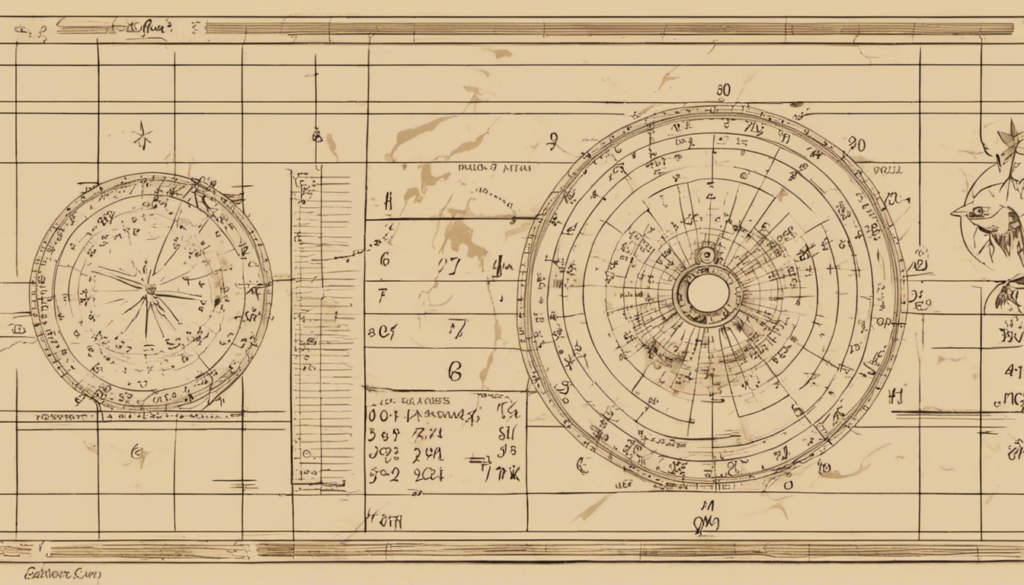Astrology is a complex system that uses celestial bodies and their positions to interpret and understand various aspects of an individual’s life. One important concept in astrology is the chart ruler, which plays a significant role in determining a person’s personality, characteristics, and life events. In this article, we will explore the definition of the chart ruler in astrology and the importance of finding it.
https://www.youtube.com/watch?v=tcJ0jGk_zp8
Understanding the Natal Chart
Before diving into the concept of the chart ruler, it is essential to understand the natal chart. The natal chart, also known as the birth chart, is a snapshot of the sky at the exact moment of an individual’s birth. It represents the positions of the planets, houses, and signs at that specific time and location.
The natal chart consists of three main components: planets, houses, and signs. Planets represent different energies and qualities, houses symbolize different areas of life, and signs indicate the specific characteristics and traits associated with each planet.
Identifying the Ascendant
The ascendant, also known as the rising sign, is one of the most crucial elements in the natal chart. It represents the sign that was rising on the eastern horizon at the time of an individual’s birth. The ascendant plays a significant role in determining the overall personality and physical appearance of a person.
To determine the ascendant, one needs to know the exact time of birth. The ascendant changes approximately every two hours, so a precise birth time is essential for accurate ascendant identification. Alternatively, online birth chart calculators can also be used to determine the ascendant based on the birth details provided.
Determining the Ruling Planet of the Ascendant
The ruling planet of the ascendant, also known as the chart ruler, is the planet that rules the sign on the ascendant. It holds great significance in astrology as it represents the overall theme and energy of an individual’s life.
Finding the ruling planet involves understanding the concept of rulership. Traditional rulership assigns specific planets to each sign, while modern rulership considers the planet that best aligns with the characteristics of a particular sign. Both methods can be used to determine the ruling planet of the ascendant.
Analyzing the Placement of the Ruling Planet
Once the ruling planet is identified, its placement in each house of the natal chart provides valuable insights into an individual’s life areas and characteristics. The ruling planet’s position in a particular house influences how the energy of that planet manifests in the corresponding area of life.
For example, if the ruling planet of the ascendant is in the second house, it indicates a strong focus on personal values, finances, and possessions. Analyzing the placement of the ruling planet helps astrologers understand the individual’s strengths, challenges, and potential areas of growth.
Examining the Sign of the Ruling Planet
In astrology, each zodiac sign has unique characteristics and qualities associated with it. The sign in which the ruling planet of the ascendant is placed adds an extra layer of influence on an individual’s personality and traits.
For instance, if the ruling planet of the ascendant is in Leo, it adds a dose of creativity, leadership, and self-expression to the person’s overall demeanor. Understanding the ruling planet’s sign helps astrologers paint a more detailed picture of an individual’s personality.
Analyzing the Aspects to the Ruling Planet
Aspects in astrology refer to the geometric angles formed between planets in the natal chart. The aspects to the ruling planet of the ascendant reveal how it interacts with other planets and influences various areas of life.
For example, if the ruling planet forms a harmonious aspect, such as a trine, with the planet of communication, it indicates ease and natural talent in expressing oneself and forming connections. On the other hand, challenging aspects, such as squares or oppositions, may present obstacles or tensions that need to be addressed.
Exploring the Ruling Planet’s House Placement
The house placement of the ruling planet further refines the interpretation of its influence. Each house in the natal chart represents different areas of life, such as career, relationships, and personal growth. The ruling planet’s house placement highlights the specific life areas where its energy is most prominent.
For example, if the ruling planet of the ascendant is in the tenth house, it suggests a strong focus on career, public image, and professional achievements. Understanding the ruling planet’s house placement provides valuable insights into the individual’s priorities and life goals.
Understanding the Chart Ruler’s Transits and Progressions
In astrology, transits and progressions refer to the movement of planets in relation to the natal chart over time. Tracking the transits and progressions of the chart ruler provides valuable information about significant life events and personal growth opportunities.
For example, when the ruling planet makes a conjunction with another planet in the chart, it can signify a time of new beginnings or important shifts in the corresponding area of life. Monitoring these transits and progressions helps astrologers provide accurate predictions and guidance.
Utilizing the Chart Ruler in Astrological Readings
Astrologers incorporate the chart ruler into natal chart interpretations to gain a deeper understanding of an individual’s life themes and challenges. By analyzing the ruling planet’s placement, aspects, sign, and house, astrologers can provide valuable insights and guidance for personal growth and self-discovery.
The chart ruler serves as a powerful tool in predictive astrology as well. By tracking its transits and progressions, astrologers can make accurate predictions about future events and potential life changes.
Case Studies: Examples of Chart Rulers in Different Natal Charts
To illustrate the practical application of chart rulers, let’s explore some examples of chart rulers in celebrity charts. By analyzing the chart ruler’s influence on their lives and careers, we can gain a deeper understanding of how this concept manifests in real-life scenarios.
Common Misconceptions and Pitfalls in Finding the Chart Ruler
While understanding the chart ruler is crucial in astrology, there are common misconceptions and pitfalls to be aware of. Addressing these misconceptions and avoiding common mistakes ensures accurate chart ruler identification and interpretation.
In conclusion, finding the chart ruler is an important aspect of astrology, as it provides valuable insights into an individual’s personality, characteristics, and life events. By analyzing the placement, aspects, sign, and house of the ruling planet, astrologers can provide accurate interpretations and predictions. Understanding the chart ruler’s influence allows individuals to gain self-awareness, navigate life challenges, and harness their innate potentials.

Hi! I’m Jason Soul, an astrology enthusiast who created a website to share my passion for the stars. Through daily horoscopes and personalized readings, I strive to connect others with the cosmic patterns that influence our lives.
